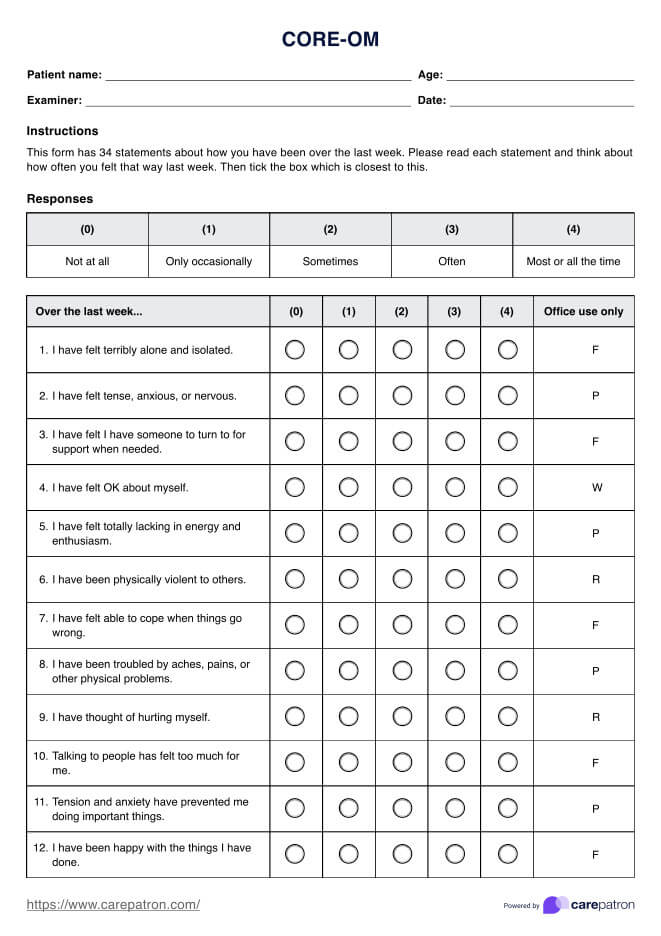Psychological distress can lead to impaired functioning in daily life, reduced quality of life, and increased risk of mental health disorders such as anxiety, depression, and substance abuse.

CORE-OM
Download our free CORE-OM template to assess therapeutic outcomes with scoring, interpretation, and next steps for effective treatment.
Use Template
CORE-OM Template
Commonly asked questions
Interpret the CORE-OM by assessing higher scores indicating greater distress or dysfunction across the measured domains and lower scores suggesting fewer issues or improvements.
The maximum score on the CORE-OM is 136, representing the highest level of distress across all items.
EHR and practice management software
Get started for free
*No credit card required
Free
$0/usd
Unlimited clients
Telehealth
1GB of storage
Client portal text
Automated billing and online payments











